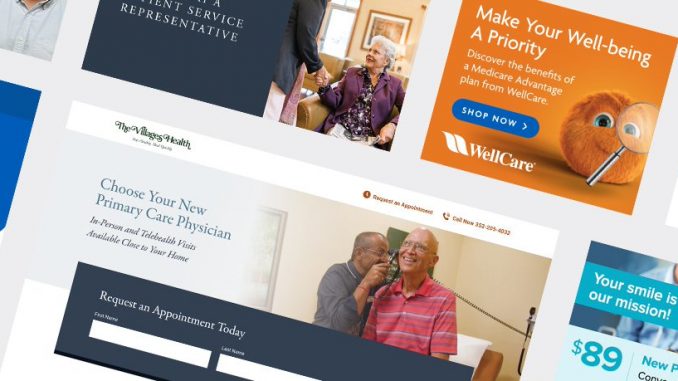
There are a lot of acronyms in healthcare, but few instill more fear in the hearts of healthcare marketers more than OEP (Open Enrollment Period) and AEP (Annual Election Period). Twice a year, for several months at a time, countless health plans vie for the attention of prospects aging into and moving around the Medicare population. Competition is stiff and intensifies with each passing year. What’s a national health plan to do?!
Launch a strategic pay-per-click (PPC) campaign, of course!
Effective pay-per-click campaigns drive traffic and conversions from search engines, targeting specialized audience segments, which means you get to control which customer demographics you want to advertise to. The benefits of PPC are clear, but many businesses are scared to take the plunge. Don’t worry. With a little guidance and proper budgeting, you’ll find that the PPC monster is nothing to fear.
Building a Budget – Check Your Vitals First
Healthcare advertising is projected to reach a value of $24.7 Billion by 2026. PPC is popular and yields high ROI. It is no longer a matter of using PPC campaigns, but a matter of how much your organization is willing to invest in strategic healthcare marketing. But before we get to the numbers, here’s what you need to know about PPC.
Refresh your team on the intricacies of healthcare search engine marketing before planning your budget. It’s important to get a read on your team’s comfort level with digital advertising and get a baseline on the health of your overall marketing strategy. From here, you can explore the various PPC strategies available to your business.
Campaign Planning That Won’t Raise Your Blood Pressure
Your PPC budget is dependent upon your campaign planning. Because you control your ad spend, you need to enter the budgeting process with a good grasp on the types of campaigns that will work best for your health plan. Think about your target audience and the personas of each prospective enrollee. Where are they searching, scrolling or shopping?
Some organizations even appeal to specific regions by using Nextdoor to place ads. There is no limit to how many campaign types you can run if you have the budget to do so. Now that you’re prepped for the procedure – let’s get into budgeting.
How To Make Budgeting as Painless as Possible
Building a budget is a lot like getting a vaccine – you might feel a little pinch. Dealing with numbers is rarely ever fun – but you’ll be protected and positioned to make a profit if you approach this part of the process with care.
Quick Tip: Start forecasting now. Use Google and other PPC tools to gather data on keyword traffic, PPC campaign updates or algorithm changes, and your company’s internal performance. Use this data to create projection sheets. Search Engine Journal put together a great guide on this process complete with helpful formulas.
Pay-per-click and the budgeting process are complex systems. Much like healthcare patients, no campaign is exactly like another. This means you need to be flexible when it comes to planning and budgeting to ensure the health of your marketing efforts remains optimal. We used this formula, with some added flexibility, to launch a wildly successful healthcare PPC campaign for a client that resulted in a 73% decrease in cost-per-lead (CPL). We want your health plan to achieve similar results.
If your paid media strategy is ailing, the team at Roger West can change the prognosis. Give us a call. We’re here to help.

Leave a Reply